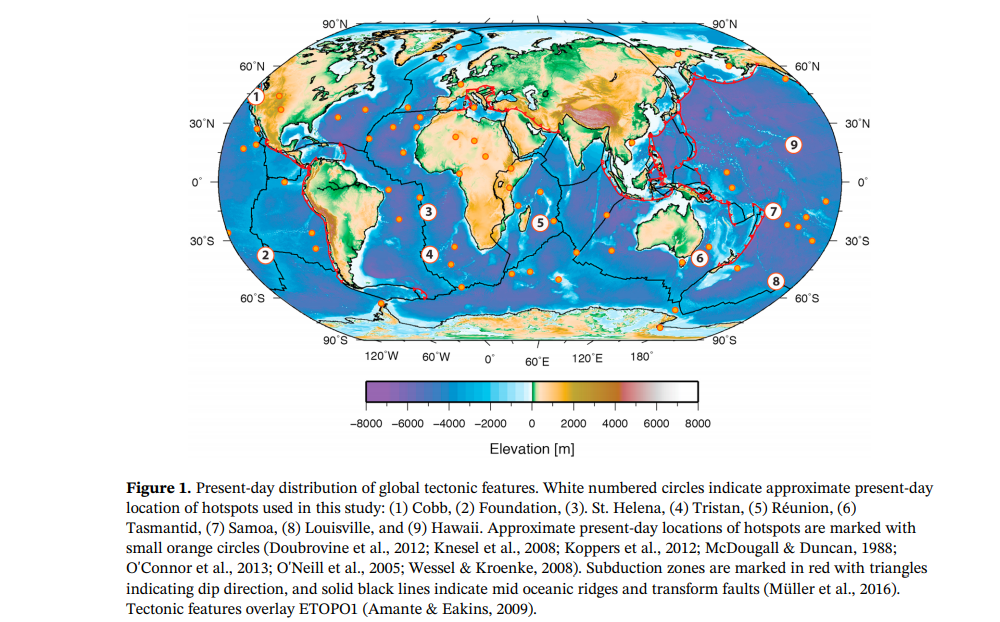
Abstract: The absolute motion of tectonic plates since Pangea can be derived from observations of hotspot trails, paleomagnetism, or seismic tomography. However, fitting observations is typically carried out in isolation without consideration for the fit to unused data or whether the resulting plate motions are geodynamically plausible. Through the joint evaluation of global hotspot track observations (for times <80 Ma), first‐order estimates of net lithospheric rotation (NLR), and parameter estimation for paleo–trench migration (TM), we present a suite of geodynamically consistent, data‐optimized global absolute reference frames from 220 Ma to the present. Each absolute plate motion (APM) model was evaluated against six published APM models, together incorporating the full range of primary data constraints. Model performance for published and new models was quantified through a standard statistical analyses using three key diagnostic global metrics: root‐mean square plate velocities, NLR characteristics, and TM behavior. Additionally, models were assessed for consistency with published global paleomagnetic data and for ages <80 Ma for predicted relative hotspot motion, track geometry, and time dependence. Optimized APM models demonstrated significantly improved global fit with geological and geophysical observations while performing consistently with geodynamic constraints. Critically, APM models derived by limiting average rates of NLR to ~0.05°/Myr and absolute TM velocities to ~27‐mm/year fit geological observations including hotspot tracks. This suggests that this range of NLR and TM estimates may be appropriate for Earth over the last 220 Myr, providing a key step toward the practical integration of numerical geodynamics into plate tectonic reconstructions.
Citation: Tetley, M. G., Williams, S. E., Gurnis, M., Flament, N., & Müller, R. D. (2019). Constraining absolute plate motions since the Triassic. Journal of Geophysical Research: Solid Earth, 124. https://doi.org/10.1029/2019JB017442
For full text please click here.
![]()
